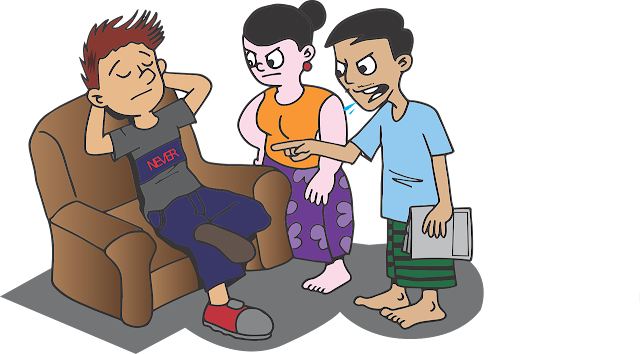Tastebuds and Saliva
To speak rhetorically is counterproductive for common understanding. To speak literally likewise does not always contribute much, or does it? But to speak has various forms. It can be printed or recorded; it can be silent or deafening. To speak is to express – to reveal what goes unsaid, to repeat what goes unheard, and to resolve what goes stated but ignored. Cinema speaks. It communicates more than it aims and sometimes aims more than what can only be communicated. The medium is limited but has a lot of power, and it thrives and fails with such nature. Cinema has a sharp tongue. It tastes the reality and assumes its knowledge as to live through it. It can also lick what is presented and passively swallow. It tastes and spits, rarely, and almost always misses the ground; but when it does, it will surely leave a spot.
When facts can be presented poetically, do meanings become more defined and understanding more essential? In documentary films that are formally stunning and have practically strong content, the literal becomes figurative and the symbolical rhetorical. The gripping (re)presentation is enough to speak for itself. The camera immerses or detaches you from the subject. It works as it is literal; it delivers as the symbolical becomes psychologically effective. Cinema, particularly documentaries, speak both languages. As it is inherently technical and thus denotations are established, contexts further the surface and hence connotations are warranted to make sense. The plan was to make a documentary about the social injustices in the time of the pandemic here in the Philippines. The idea was to present the facts as they are, while the challenge was to construct them as to draw conclusions and prove said injustices cinematically. How taunting is it to realize that it is the same injustice that prevented this documentary from happening? The injustice committed by a government so purposefully incompetent that resulted and will continue to cause a series of preventable misfortunes…until people know better.
To speak is to try break a barrier. You aim to communicate a message across. A message. That is why silencing those who speak is an attempt to sustain such barrier. The barrier is ignorance. The barrier is violence. The barrier is made by powerful oppressors so firm that freedom becomes a myth. So firm that a message is judged harmful when it critiques and exposes harsh realities. Yet this applies both ways, so it becomes a matter of perspectives, doesn’t it? And so, we choose a side.
We planned to trace back when it started, how it got worse, and what the government did and didn’t do that caused and put us to where we are today – physically isolated and mentally drained, individually ruined and collectively forsaken. With one of the longest lockdowns in the world, the national government remains corrupt, inadequate, and indifferent to the plight of the masses. With the consistent rhetoric of the president, there goes another lie he proclaimed few months ago that we would go“back to normal” by December. Well, it is December, and the country has over 400,000 recorded cases – only just having news for a vaccine so recently. By normal, he means his lies. We should have known better!
With a poor and bad governance the country has, a database would be easily filled by signs of incompetence (unqualified appointed secretaries), broadcasted news of state violence (military intolerance during the quarantine period: Ragos case, Baby River case, etc.; arrest of protesters: Pride 20, Cebu 8, etc.), unjust implementation of the laws (prevalent double standards for lockdown protocol violators: Sinas’ Mañanita, Senator Pimentel case, etc.; vague and dangerous anti-terror law), misplaced priorities and inhumane policies (Manila “Beach”, shoot to kill proclamations, inadequate material assistance for frontliners vs PNP cash bonuses), and several others that will be conveniently forgotten and even forgiven.
We planned to present a timeline from the present to ground zero. We planned to interject news footage with citizens’ reaction. We planned to produce short clips of the documentary and publish them on social media like Twitter to reach the target audience – reverse chronologically so the timeline becomes more apparent and the purpose to agitate delivered. We planned to agitate more the already agitated virtual world. We planned, but we are disrupted. We are disrupted by the same subject we are aiming to disrupt; now it proves itself truer than we ever can. Faced by this paradox, we can only hope for another chance.
To speak rhetorically comes from the common understanding of the literal. This is same with cinema. Presentation of reality can be staged to invite questions or to question what is being presented, or it can be spontaneously captured for objectivity or even practicality. Documentary films are representation and reproduction of realities – creative crafts that are responsible and meaningful. They cannot be truer; they cannot be more factual than the real. They can only serve as a capsule of the struggles and experiences which are common yet obscured from the society, shared by the classes but systematically disregarded. As it is a spatial and temporal medium, documentary films serve as a proof of the time that fills a space in humanity. Yes, cinema does that. But more than the various forms, it can contain several truths that may take time in history to be reconciled. To not speak is to oppress oneself and the other; yet to express is sometimes to free oneself and oppress the other. When we are faced by such predicament, let us remind ourselves who has the power. Who has the camera? Who speaks? Who can’t? For cinema has a sharp tongue, we have to justify which it tastes and acknowledges; it licks, and we have to be careful which to swallow or spit. As it often misses the ground, let us make sure it leaves a spot when it does – before it dries.
04 December 2020
Agitated Tastebuds and Saliva:
A Reflection to the Documentary Film Class and What Could Have Been
When facts can be presented poetically, do meanings become more defined and understanding more essential? In documentary films that are formally stunning and have practically strong content, the literal becomes figurative and the symbolical rhetorical. The gripping (re)presentation is enough to speak for itself. The camera immerses or detaches you from the subject. It works as it is literal; it delivers as the symbolical becomes psychologically effective. Cinema, particularly documentaries, speak both languages. As it is inherently technical and thus denotations are established, contexts further the surface and hence connotations are warranted to make sense. The plan was to make a documentary about the social injustices in the time of the pandemic here in the Philippines. The idea was to present the facts as they are, while the challenge was to construct them as to draw conclusions and prove said injustices cinematically. How taunting is it to realize that it is the same injustice that prevented this documentary from happening? The injustice committed by a government so purposefully incompetent that resulted and will continue to cause a series of preventable misfortunes…until people know better.
To speak is to try break a barrier. You aim to communicate a message across. A message. That is why silencing those who speak is an attempt to sustain such barrier. The barrier is ignorance. The barrier is violence. The barrier is made by powerful oppressors so firm that freedom becomes a myth. So firm that a message is judged harmful when it critiques and exposes harsh realities. Yet this applies both ways, so it becomes a matter of perspectives, doesn’t it? And so, we choose a side.
We planned to trace back when it started, how it got worse, and what the government did and didn’t do that caused and put us to where we are today – physically isolated and mentally drained, individually ruined and collectively forsaken. With one of the longest lockdowns in the world, the national government remains corrupt, inadequate, and indifferent to the plight of the masses. With the consistent rhetoric of the president, there goes another lie he proclaimed few months ago that we would go“back to normal” by December. Well, it is December, and the country has over 400,000 recorded cases – only just having news for a vaccine so recently. By normal, he means his lies. We should have known better!
We do know better.
 |
| Photo from PTV |
With a poor and bad governance the country has, a database would be easily filled by signs of incompetence (unqualified appointed secretaries), broadcasted news of state violence (military intolerance during the quarantine period: Ragos case, Baby River case, etc.; arrest of protesters: Pride 20, Cebu 8, etc.), unjust implementation of the laws (prevalent double standards for lockdown protocol violators: Sinas’ Mañanita, Senator Pimentel case, etc.; vague and dangerous anti-terror law), misplaced priorities and inhumane policies (Manila “Beach”, shoot to kill proclamations, inadequate material assistance for frontliners vs PNP cash bonuses), and several others that will be conveniently forgotten and even forgiven.
We should know better. We do know better.
We planned to present a timeline from the present to ground zero. We planned to interject news footage with citizens’ reaction. We planned to produce short clips of the documentary and publish them on social media like Twitter to reach the target audience – reverse chronologically so the timeline becomes more apparent and the purpose to agitate delivered. We planned to agitate more the already agitated virtual world. We planned, but we are disrupted. We are disrupted by the same subject we are aiming to disrupt; now it proves itself truer than we ever can. Faced by this paradox, we can only hope for another chance.
To speak rhetorically comes from the common understanding of the literal. This is same with cinema. Presentation of reality can be staged to invite questions or to question what is being presented, or it can be spontaneously captured for objectivity or even practicality. Documentary films are representation and reproduction of realities – creative crafts that are responsible and meaningful. They cannot be truer; they cannot be more factual than the real. They can only serve as a capsule of the struggles and experiences which are common yet obscured from the society, shared by the classes but systematically disregarded. As it is a spatial and temporal medium, documentary films serve as a proof of the time that fills a space in humanity. Yes, cinema does that. But more than the various forms, it can contain several truths that may take time in history to be reconciled. To not speak is to oppress oneself and the other; yet to express is sometimes to free oneself and oppress the other. When we are faced by such predicament, let us remind ourselves who has the power. Who has the camera? Who speaks? Who can’t? For cinema has a sharp tongue, we have to justify which it tastes and acknowledges; it licks, and we have to be careful which to swallow or spit. As it often misses the ground, let us make sure it leaves a spot when it does – before it dries.
04 December 2020
Agitated Tastebuds and Saliva:
A Reflection to the Documentary Film Class and What Could Have Been









Comments
Post a Comment